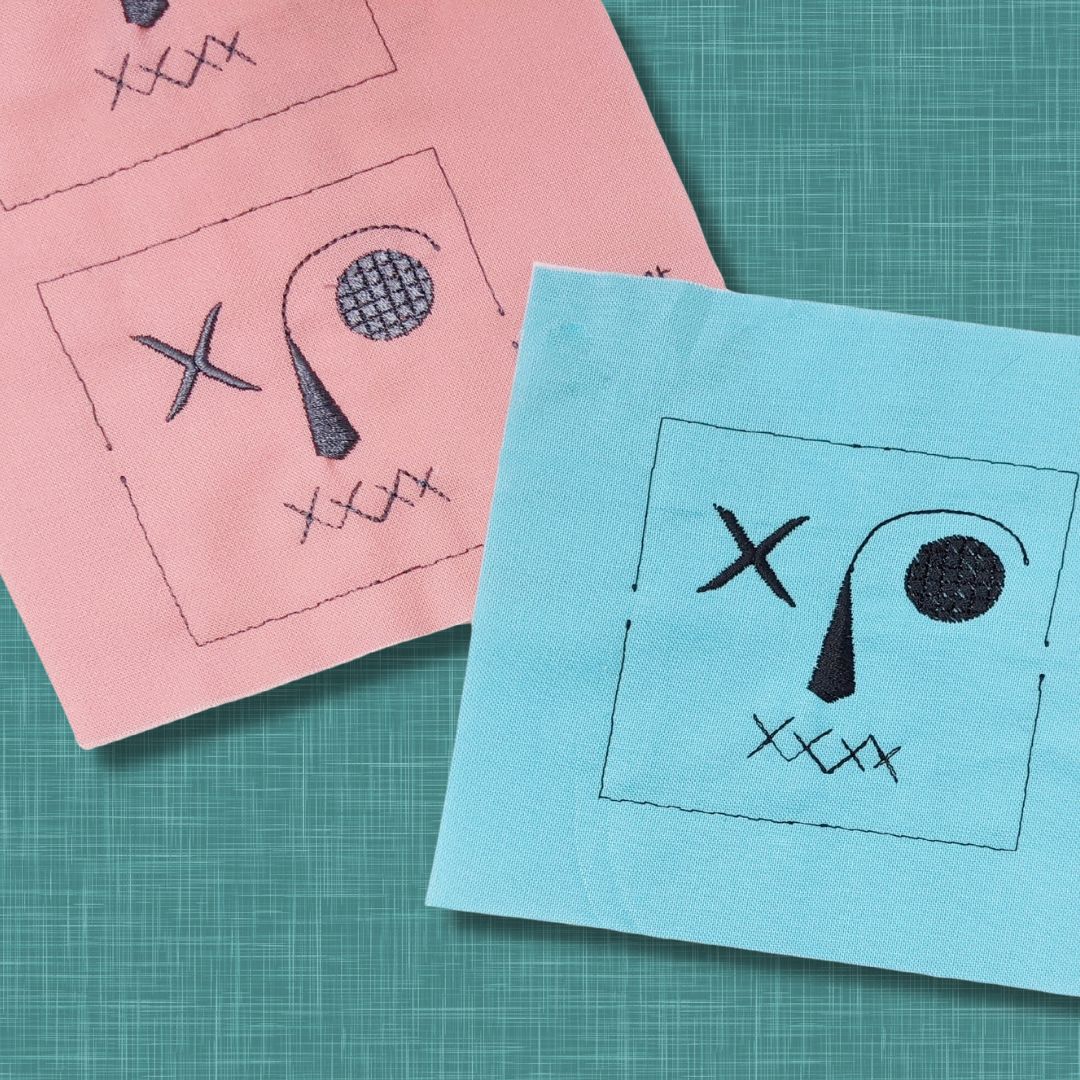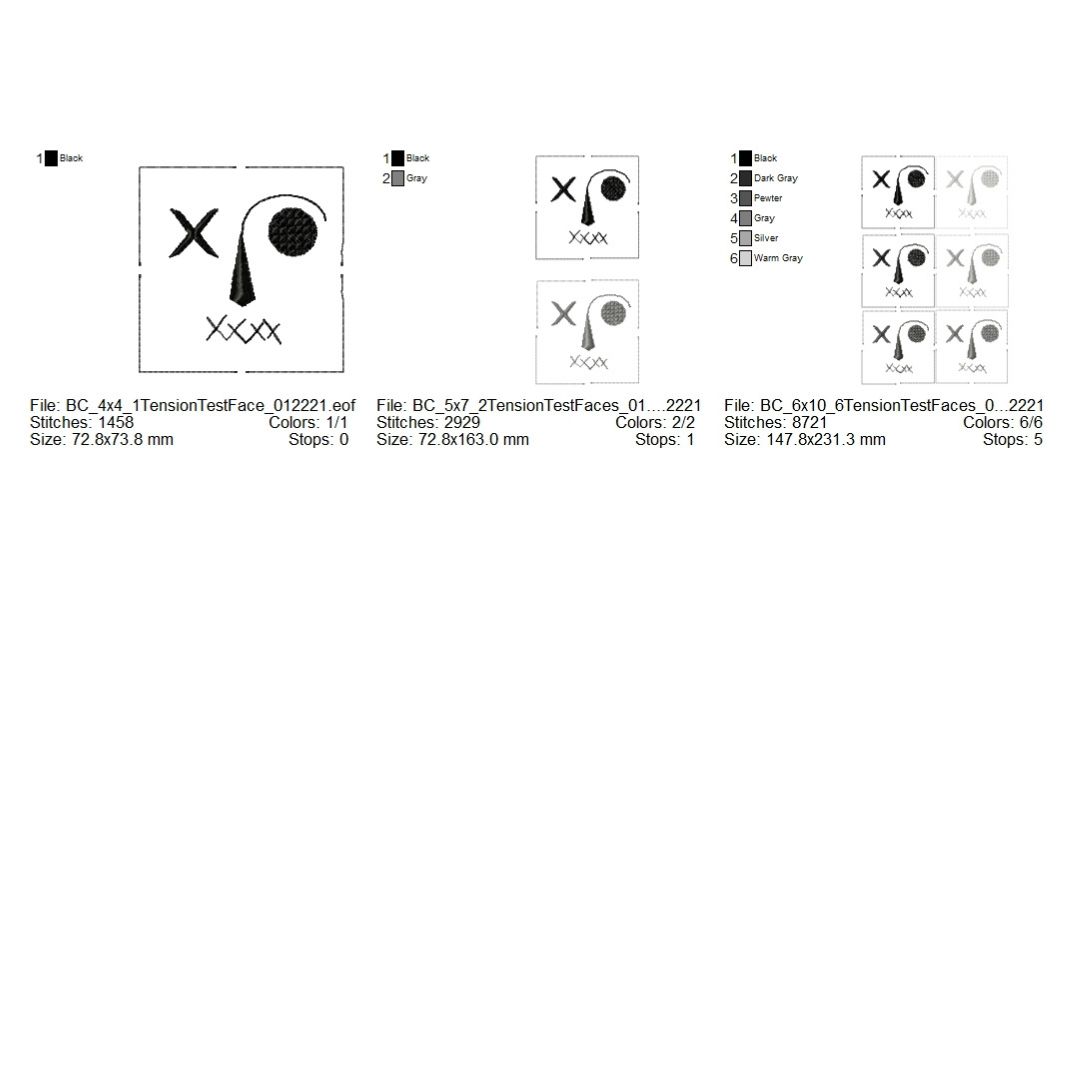FREEBIE – Tension Test for ITH
$0.00
FREE FILE! – test your embroidery machine tension with satin, fill, different running stitches, and a bean stitch. See details below on how to use this file, including a video on how to evaluate your tension test results.
This weird face file was created to test your embroidery machine tension for ALL the types of stitches used in machine embroidery. Just stitch it out onto your stabilized fabric, then adjust your machine tension and stitch it out again. You can compare how each stitch looks at different tension levels and decide the BEST setting for your machine whether you’re doing satin stitches or seams for In-the-hoop projects. Be sure to watch the video on the Instructions tab to learn the pitfalls of bad stitch tension.
All designs are digital downloads and require an embroidery machine to make these projects. We don’t ship anything from Ballyhoo Creations.
- After checkout, you will be forwarded to a download page to get your files. (A link will also be emailed to you) Your digital download will be a ZIP file that includes:
- PDF document showing the stitch order for sizes that have multiple faces
- designs in the following 9 machine formats: DST, EXP, HUS, JEF, PES, SHV, VIP, VP3, XXX
- 3 hoop sizes (4×4 has 1 face, 5×7 has 2 faces, 6×10 has 6 faces)
- A license file to inform you these files cannot be shared or distributed. Please send your friends here to get their own copy of these test files. Thanks!
Instructions and Video
For the best results, test your machine tension using the following:
- cutaway stabilizer
- medium weight woven cotton (like quilting cotton)
- Fresh 75/11 embroidery needle
- 40 wt poly thread (tension results will vary between poly and rayon, even different brands and colors of thread can give different results so use the same thread for all tension settings)
- A clean embroidery machine that has lint removed from bobbin case and thread paths.
Stitch one of the faces and note your tension setting. Continue stitching the faces with different tension settings (but same thread) and evaluate which tensions you feel do the best job for the different types of stitches.
Watch the video for tips on how to evaluate good/versus bad tension.



